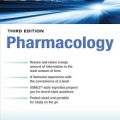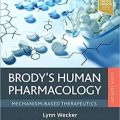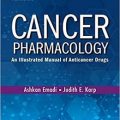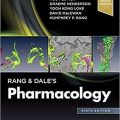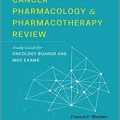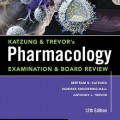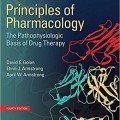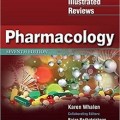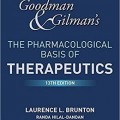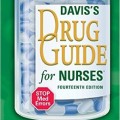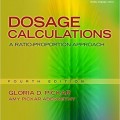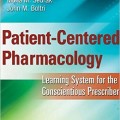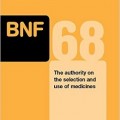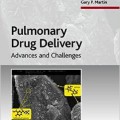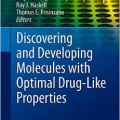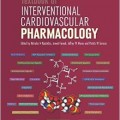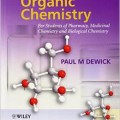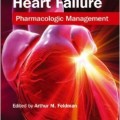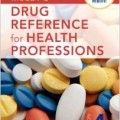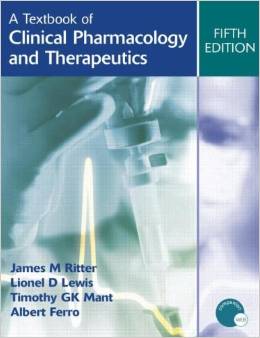دانلود کتاب فارماکولوژی برِنر و استیونس
Brenner & Stevens’ Pharmacology, 4ed
Pharmacology, 4th Edition helps you master the “must-know” concepts in this subject and how they apply to everyday clinical problem solving and decision making. This concise yet comprehensive text clearly explains and illustrates challenging concepts and helps you retain the material – from course exams and the USMLE Step 1 right through to clinical practice.
- Quickly reference essential information thanks to abundant tables throughout, and drug classification boxes at the beginning of each chapter.
- See how pharmacology applies to practice with real-world case studies.
- Prepare for exams with self-assessment questions at the end of each chapter.
- Understand complex concepts visually with the aid of superb full-color illustrations.
- Access the complete contents online at www.studentconsult.com, along with an additional glossary, chapter-by-chapter summaries and case studies, a full list of featured drugs, 150 USMLE-style questions, animations, and more.
- Learn the latest pharmacologic mechanisms and applications with new and updated drug information throughout.
- Be aware of new “off label” uses, including important FDA regulations.
Review
US Student: “Great format and chapter outline. The descriptions are very concise and have great information. The tables with the side effect comparisons of drugs in the same category are wonderful. The pictures that describe the mechanisms of action help illustrate and assist you in remembering the material.”
“This pharmacology textbook is one of the best for teaching a basic pharmacology course. This third edition is markedly improved over the earlier ones. Although designed especially for osteopathic and allopathic medical students, this book also would serve as an excellent text for pharmacy, nursing, and other allied health professions students who are required to take a basic pharmacology course. This book will function as a useful text for both discipline-based and integration-based curricula. Weighted Numerical Score: 98 – 5 Stars!” – Thomas L. Pazdernik, PhD(University of Kansas Medical Center), from Doody’s Reviews
Contents
Section I: Principles of Pharmacology
Chapter 1 Introduction to Pharmacology
Chapter 2 Pharmacokinetics
Chapter 3 Pharmacodynamics
Chapter 4 Drug Development and Safety
Section II: Autonomic and Neuromuscular Pharmacology
Chapter 5 Intorduction to Autonomic and Neuromuscular Pharmacology
Chapter 6 Acetylcholine Receptor Agents
Chapter 7 Acetylcholine Receptor Agonists
Chapter 8 Adrenoceptor Agonists
Chapter 9 Adrenoceptor Antagonists
Section III: Cardiovascular, Renal and Hematological Pharmacology
Chapter 10 Antihypertensive Drugs
Chapter 11 Antianginal Drugs
Chapter 12 Drugs for Heart Failure
Chapter 13 Diuretics
Chapter 14 Antiarrythmic Drugs
Chapter 15 Drugs for Hyperlipidemia
Chapter 16 Anticoagulant, Antiplatelet, and Fibrionolytic Drugs
Chapter 17 Hematopoietic Drugs
Section IV: Central Nervous System Pharmacology
Chapter 18 Introduction to Central Nervous System Pharmacology
Chapter 19 Sedative-Hypnotic and Axiolytic Drugs
Chapter 20 Antiepileptic Drugs
Chapter 21 Local and General Anesthetics
Chapter 22 Psychotherapeutic Drugs
Chapter 23 Opioid Analgesics and Antagonists
Chapter 24 Drugs for Neurodegenerative Diseases
Chapter 25 Drugs of Abuse
Section V: Pharmacology of the Respiratory and Other Systems
Chapterr 26 Autocoid Drugs
Chapter 27 Drugs for Respiratory Tract Disorders
Chapter 28 Drugs for Gastrointestinal Tract Disorders
Chapter 29 Drugs for Headache Disorders
Chapter 30 Drugs for Pain, Inflammation, and Arthritic Disorders
Section VI: Endocrine Pharmacology
Chapter 31 Hypothalmic and Pituitary Drugs
Chapter 33 Adrenal Steroids and Regulated Drugs
Chapter 34 Drugs Affecting Fertility and Reproduction
Chapter 35 Drugs for Diabetes Mellitus
Chapter 36 Drugs Affecting Calcium and Bone
Section VII: Chemotherapy
Chapter 37 Principles of Antimicrobial Chemotherapy
Chapter 38 Inhibitors of Bacterial Cell Wall Synthesis
Chapter 39 Inhibitors of Bacterial Protein Synthesis
Chapter 40 Quinolones, Antifolate Drugs, and Other Antimicrobial Agents
Chapter 41 Antimycobacterial Drugs
Chapter 42 Antifungal Drugs
Chapter 43 Antiviral Drugs
Chapter 44 Antiparasitic Drugs
Chapter 45 Antineoplastic and Immunomodulating Drugs
لینک کوتاه : https://bookbaz.ir/?p=17257
نویسنده : George M. Brenner PhD , Craig Stevens PhD
ناشر : Saunders; 4 edition
سال انتشار : 2013
زبان کتاب : انگلیسی
نوع فایل : PDF
تعداد صفحات : 530
(ISBN) شابک : 145570282X
قیمت کتاب درآمازون : $58.28
حجم فایل : 28 MB





















